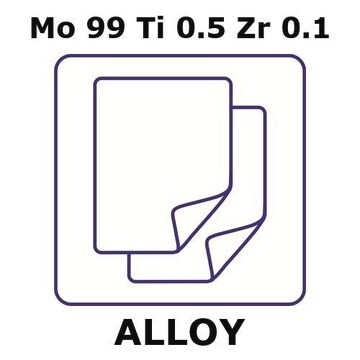266922
Molybdenum
foil, thickness 0.1 mm, ≥99.9% trace metals basis
Synonym(s):
Molybdenum element
About This Item
Recommended Products
Quality Level
Assay
≥99.9% trace metals basis
form
foil
resistivity
5.0 μΩ-cm, 20°C
thickness
0.1 mm
bp
4612 °C (lit.)
mp
2617 °C (lit.)
density
10.3 g/mL at 25 °C (lit.)
SMILES string
[Mo]
InChI
1S/Mo
InChI key
ZOKXTWBITQBERF-UHFFFAOYSA-N
General description
Quantity
Storage Class Code
13 - Non Combustible Solids
WGK
nwg
Flash Point(F)
Not applicable
Flash Point(C)
Not applicable
Personal Protective Equipment
Certificates of Analysis (COA)
Search for Certificates of Analysis (COA) by entering the products Lot/Batch Number. Lot and Batch Numbers can be found on a product’s label following the words ‘Lot’ or ‘Batch’.
Already Own This Product?
Find documentation for the products that you have recently purchased in the Document Library.
Customers Also Viewed
Articles
Combinatorial Materials Science identifies breakthrough materials through systematic exploration, aiding material discovery.
Combinatorial Materials Science identifies breakthrough materials through systematic exploration, aiding material discovery.
Combinatorial Materials Science identifies breakthrough materials through systematic exploration, aiding material discovery.
Combinatorial Materials Science identifies breakthrough materials through systematic exploration, aiding material discovery.
Our team of scientists has experience in all areas of research including Life Science, Material Science, Chemical Synthesis, Chromatography, Analytical and many others.
Contact Technical Service



